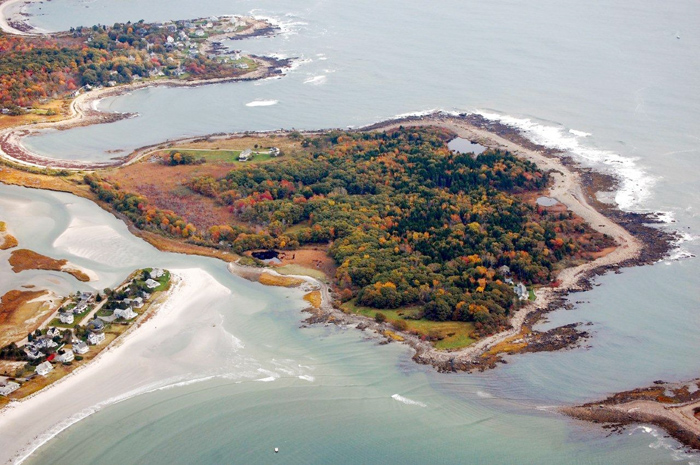The U.S. Fish and Wildlife Service announced plans Thursday to preserve historic buildings and add a walking trail on Timber Point at the Rachel Carson National Wildlife Refuge in Biddeford.
Timber Point, at the end of Granite Point Road, is one of the largest undeveloped properties on the southern Maine coast. The U.S. Fish and Wildlife Service bought the property with a $3 million appropriation from the federal Land and Water Conservation Fund and more than $2 million raised by The Trust for Public Land, the Kennebunkport Conservation Trust and the Friends of Rachel Carson. It includes a 97-acre peninsula and a 13-acre island.
The wildlife service considered four options, including ones that would have demolished buildings or expanded public interaction with the property. After reviewing more than 280 public comments, officials chose a plan “that strikes the right balance between the interests for public use at the site while maintaining wildlife values,” the wildlife service said in a media release.
Under the plan selected by the wildlife service, buildings that are eligible for the historic register will be repaired and preserved. Trails on the property will be expanded and a self-guided tour about master architect Charles Ewing, who built the main cottage and other buildings on the property, and the habitat on the peninsula would be added to the exterior of buildings he designed and built. The service estimates the chosen plan would require $390,000 to stabilize the buildings and about $35,000 a year to maintain.
Ewing built the estate’s 14-bedroom cottage around 1930. Other buildings on the property include a garage/woodshop complex, truck garage, boathouse, changing shed, remnants of a greenhouse, and other structures. These buildings may be eligible for the National Register of Historic Places, according to the wildlife service.
The buildings have been empty since 2011.
Another alternative considered by the wildlife service would have created a partnership with a nonprofit group to allow use of the buildings by the public. That plan would have cost $3.2 million to bring the main house up to standards as a visitor center and about $80,000 a year to maintain, according to the environmental assessment.
A local nonprofit group, the Timber Point Center, pushed for a different alternative that would have allowed it to use the property for educational retreats and meetings. Josephine Power, who spearheaded the Timber Point Center plan, was out of town and not available for comment Thursday. Neighbors raised concerns about that plan, saying it would bring more traffic and safety hazards to the area.
The wildlife service has retained an architectural historian to evaluate the historic preservation status of the buildings and work with the state Historic Preservation Office to complete a nomination package to be considered by the National Historic Preservation Office.
Send questions/comments to the editors.




Success. Please wait for the page to reload. If the page does not reload within 5 seconds, please refresh the page.
Enter your email and password to access comments.
Hi, to comment on stories you must . This profile is in addition to your subscription and website login.
Already have a commenting profile? .
Invalid username/password.
Please check your email to confirm and complete your registration.
Only subscribers are eligible to post comments. Please subscribe or login first for digital access. Here’s why.
Use the form below to reset your password. When you've submitted your account email, we will send an email with a reset code.